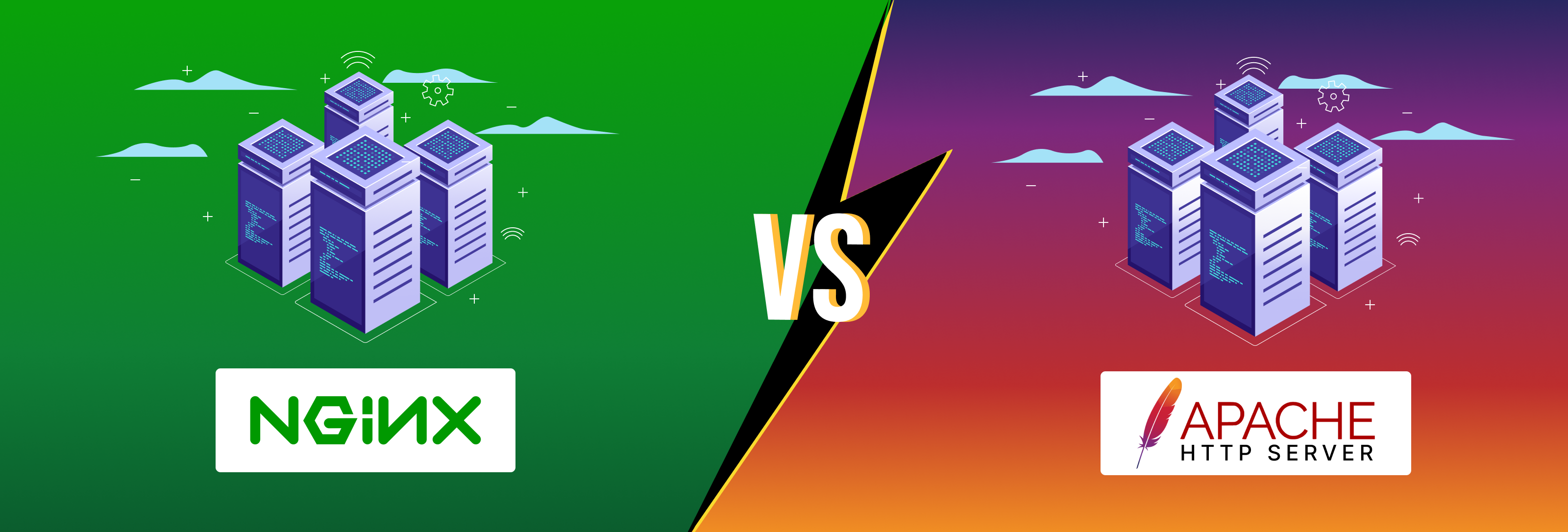Difference between Nginx & Apache
Both Nginx and Apache are popular web servers, and both can be used to host applications.
Nginx
NGINX is a web server that was created by Igor Sysoev and was first publicly released in 2004. It was originally developed to solve the C10k problem, which is the challenge of handling 10,000 concurrent connections on a single server.
Apache
Apache Server is an open-source web server which is also known as “httpd”. It was developed by the Tim Berners Lee and released in 1995. It has many features, most of which are implemented as compiled modules.
Architecture
NGINX uses an event-driven model, which is very efficient and can handle a large number of connections at the same time. It has a main process and several worker processes.
Apache follows a process-based architecture, where each incoming connection spawns a new process or thread to handle the request. This approach can consume more system resources, especially when handling a large number of concurrent connections.
Market Share of NGINX and Apache

Compatibility and Security
We will explore how Apache & Nginx web servers interact with different operating systems and programming languages and how they ensure the security of your web applications.
OS Compatibility
NGINX works with many operating systems, especially various Linux distributions. However, it’s performance on Windows isn’t as good.
Apache is compatible with various operating systems, including Windows, macOS, and various Linux distributions.
Language Compatibility
NGINX mainly supports languages that have a FastCGI or similar interface. It also supports some JavaScript through njs, which can extend NGINX’s functionality.
Apache supports many languages through modules, including PHP, Python, Perl, Ruby, and others. It can support any language that has an Apache runtime.
Security
NGINX has several security features, including SSL termination, authentication, and access control. It also has a dedicated security team.
Apache also prioritizes security. It has a good security record and a developer community that is very concerned about security issues. Apache also has a dedicated security team.
How to Choose NGINX or Apache?
NGINX and Apache are both great. Here is the abstract idea of when to choose what:
You should choose NGINX if you have:
High Traffic Sites: You expect high traffic levels and need efficient handling of concurrent connections without a significant memory footprint.
Reverse Proxy and Load Balancing: You need a reverse proxy configuration or a load balancer due to its efficient handling of static content and caching capabilities.
Microservices Architecture: Your setup involves a microservices architecture where NGINX can effectively route requests and handle multiple microservices.
Content Caching: You require robust content caching directly within the web server.
Static Content Delivery: You serve a lot of static content and need a server optimized for speed and resource efficiency.
You should choose Apache if you have:
Shared Hosting: You’re using a shared hosting environment, as Apache’s .htaccess file allows for easy directory-level configuration without server restarts.
Dynamic Content: Your site heavily relies on dynamic content, and you prefer to process it within the web server using modules like mod_php.
Customizable Solutions: You need a highly customizable web server, as Apache’s modular nature allows for extensive fine-tuning.
Diverse Modules: You want access to various modules for various functionalities.
Familiarity and Community Support: You prefer a server with a long track record and a large community for support.
Summary
NGINX: In conclusion, NGINX stands out with its remarkable speed and efficiency in handling numerous requests simultaneously, an invaluable asset for websites with heavy traffic. However, when it comes to managing dynamic content, it requires a bit more effort to get things just right.
Apache: Meanwhile, Apache remains a robust option with its powerful modularity and the convenience of .htaccess files. While it may not always keep up with NGINX’s performance under high load.





